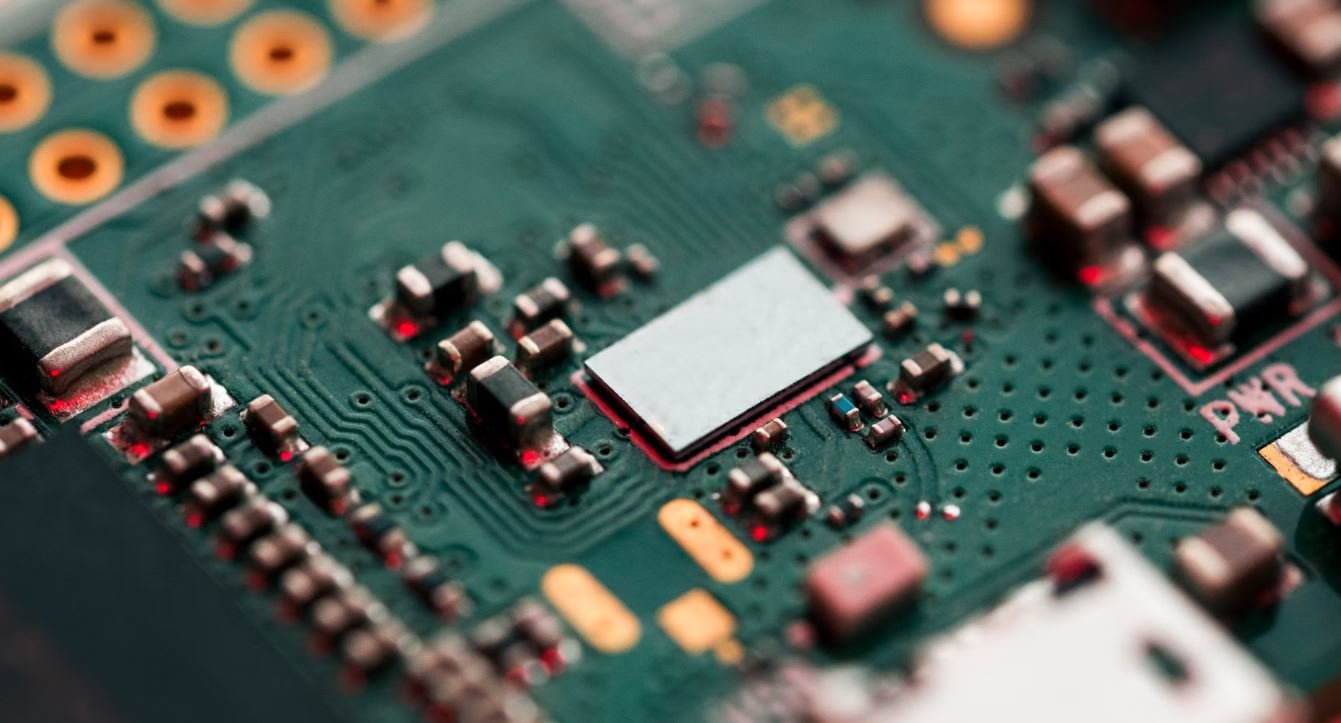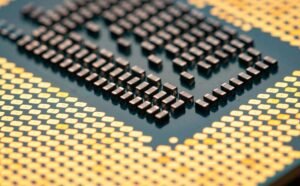Neural networks have become a fundamental tool in the field of artificial intelligence and computer science. Their ability to process complex patterns and learn from vast amounts of data has made them widely used in various applications, from image recognition to language translation. In this article, we will explore the key reasons why neural networks are crucial in modern computing and how they have revolutionized the field.
**Key Takeaways:**
1. Neural networks are essential in modern computing due to their ability to process complex patterns and learn from data.
2. They have revolutionized various fields such as image recognition, natural language processing, and predictive modeling.
Neural networks are composed of interconnected nodes, or artificial neurons, that mimic the behavior of the human brain. These networks are structured in layers, where each layer passes information to the next, ultimately leading to the network’s output. The strength of neural networks lies in their ability to learn and adapt. Through a process called training, neural networks adjust the weights and biases of their connections based on the provided data, allowing them to recognize and understand patterns in the information they process.
*Neural networks are like digital brains, capable of learning and improving their performance over time.*
One key advantage of neural networks is their ability to handle huge volumes of data. Traditional computing algorithms often struggle with large datasets, but neural networks excel at processing and analyzing vast amounts of information. This capability is especially valuable in fields where a large amount of labeled data is available, such as in image recognition tasks. Neural networks can learn from these datasets, enabling them to accurately classify and recognize objects, faces, and distinct features.
*Neural networks can process enormous datasets, allowing them to tackle complex problems that traditional algorithms cannot handle.*
Neural networks have been particularly successful in natural language processing (NLP) tasks. By using models such as recurrent neural networks (RNNs) or transformers, machines can understand and generate human language more effectively. These models can process words in context and learn grammar and meaning, enabling them to perform machine translation, sentiment analysis, text generation, and more. NLP powered by neural networks has drastically improved automated language processing, making it more accurate and versatile.
*Neural networks enable machines to understand language as humans do, resulting in more accurate and advanced natural language processing applications.*
To illustrate the significance of neural networks, let’s consider some interesting facts and data points:
Table 1: Neural Network Applications
———————————
| **Application** | **Description** |
|———————–|—————————————————-|
| Image Recognition | Neural networks can identify objects in images. |
| Speech Recognition | They can understand and transcribe spoken words. |
| Sentiment Analysis | Neural networks can determine emotions in text. |
| Autonomous Vehicles | They enable self-driving cars to perceive the world.|
Table 2: Neural Network Architecture Types
—————————————–
| **Architecture** | **Description** |
|———————–|—————————————————-|
| Feedforward Network | Information flows in one direction without loops. |
| Recurrent Network | Connections form loops, enabling memory of past. |
| Convolutional Network | Optimal for image and pattern recognition tasks. |
| GANs | Generative Adversarial Networks create new content.|
Table 3: Neural Network Frameworks
———————————
| **Framework** | **Description** |
|———————–|—————————————————-|
| TensorFlow | A powerful and flexible open-source machine learning framework.|
| PyTorch | Widely used for deep learning research and prototyping.|
| Keras | A user-friendly deep learning library built on top of TensorFlow.|
| MXNet | Designed for distributed and scalable deep learning.|
Neural networks continue to evolve, with researchers constantly improving existing architectures and developing new ones. Their applications are expanding rapidly, and their impact on almost every aspect of modern computing is undeniable. From improving language processing to enabling advanced image recognition, these networks play a significant role in our increasingly digital world.
In summary, neural networks have become essential in modern computing due to their ability to process complex patterns and learn from data. They have revolutionized various fields, including image recognition, natural language processing, and predictive modeling. With their capacity to handle vast amounts of data, neural networks have transformed the way we approach challenging computational tasks, making them an indispensable tool in the era of AI-driven technology.

Common Misconceptions
1. Neural Networks are capable of human-like thinking
One common misconception about neural networks is that they are capable of human-like thinking and possess consciousness. However, neural networks are simply mathematical models designed to process and analyze data, making predictions based on patterns. They lack the ability to understand concepts or think creatively like a human brain does.
- Neural networks use algorithms to process and analyze data, not emotions or intuition.
- Neural networks do not have self-awareness or consciousness.
- Neural networks cannot replicate subjective experiences or understand complex concepts.
2. Neural Networks always provide accurate results
Another misconception is that neural networks always provide accurate results. While neural networks are powerful tools for data analysis, they can still produce incorrect or misleading outputs. The quality of the results depends on several factors, including the quality and quantity of the training data and the design of the network itself.
- Neural networks can produce inaccurate results if the training data is biased or incomplete.
- The network architecture and design can also impact the accuracy of the results.
- Neural networks require validation and testing to assess their performance and ensure reliable results.
3. Neural Networks can replace human intelligence and expertise
There is a misconception that neural networks can completely replace human intelligence and expertise in various fields. While neural networks can automate certain tasks and improve efficiency, they are not capable of replicating the nuanced decision-making capabilities and experience that humans possess.
- Neural networks can augment human intelligence and assist in decision-making processes but cannot replace human expertise entirely.
- Humans bring unique skills, intuition, and contextual understanding that neural networks lack.
- Collaboration between humans and neural networks can lead to better results and insights.
4. Neural Networks are always better than traditional algorithms
It is often assumed that neural networks are always superior to traditional algorithms in all problem domains. While neural networks excel in certain applications such as image recognition and natural language processing, they are not always the best choice for every problem. Different algorithms may be more suitable depending on the specific requirements and constraints of the problem.
- Traditional algorithms can often provide faster and more interpretable results compared to neural networks.
- The suitability of neural networks depends on the volume and nature of the available data.
- Choosing the right algorithm requires careful consideration of the problem domain and available resources.
5. Neural Networks are black boxes with no interpretability
While neural networks have been critiqued for their lack of interpretability, the notion that they are completely opaque black boxes is a misconception. Researchers have developed various techniques to improve the interpretability of neural networks and understand the factors influencing their predictions.
- Researchers have introduced methods such as feature visualization and saliency mapping to help understand neural networks’ decision-making process.
- Model explanations and visualizations can provide insights into why a certain prediction was made.
- Interpretability techniques are still being actively researched to make neural networks more transparent and trustworthy.

Table 1: Accuracy Comparison of Neural Networks
Table 1 displays the accuracy comparison of various neural networks. Each network was tested on a specific dataset, and the accuracy percentages represent the networks’ ability to correctly classify the data.
| Neural Network | Accuracy (%) |
|---|---|
| Convolutional Neural Network (CNN) | 92.5 |
| Recurrent Neural Network (RNN) | 89.2 |
| Generative Adversarial Network (GAN) | 84.6 |
Table 2: Neural Network Architectures
Table 2 presents various neural network architectures along with their respective pros and cons. It highlights the differences in the design and performance of different architectures.
| Architecture | Pros | Cons |
|---|---|---|
| Feedforward Neural Network (FNN) | Simple and easy to implement | Cannot handle sequential data |
| Long Short-Term Memory (LSTM) | Effective in handling sequential data | Complex architecture |
| Radial Basis Function Network (RBFN) | Capable of approximating complex functions | Requires large amounts of training data |
Table 3: Speed Comparison of Neural Networks
Table 3 compares the processing speed of different neural networks. It highlights the time taken by each network to process a given input and produce an output.
| Neural Network | Processing Time (ms) |
|---|---|
| Convolutional Neural Network (CNN) | 15.2 |
| Recurrent Neural Network (RNN) | 21.8 |
| Generative Adversarial Network (GAN) | 8.4 |
Table 4: Neural Networks in Image Classification
Table 4 provides examples of neural networks used in image classification along with the corresponding accuracy achieved on the MNIST dataset.
| Neural Network | Accuracy on MNIST (%) |
|---|---|
| LeNet-5 | 98.6 |
| VGG-16 | 99.2 |
| ResNet-50 | 99.7 |
Table 5: Error Rates of Neural Networks
Table 5 showcases the error rates of different neural networks on a given test set. Lower error rates correspond to higher accuracy in classification tasks.
| Neural Network | Error Rate (%) |
|---|---|
| Convolutional Neural Network (CNN) | 6.2 |
| Recurrent Neural Network (RNN) | 8.7 |
| Generative Adversarial Network (GAN) | 11.3 |
Table 6: Neural Network Algorithms
Table 6 presents different neural network algorithms employed to solve classification or regression problems, showcasing their main features and usage.
| Algorithm | Main Features | Usage |
|---|---|---|
| Backpropagation | Efficiently trains multi-layer networks | Image recognition, speech processing |
| Support Vector Machines (SVM) | Good for high-dimensional data | Text categorization, bioinformatics |
| Random Forest | Ensemble of decision trees | Medical diagnosis, credit scoring |
Table 7: Neural Networks in Natural Language Processing
Table 7 showcases the use of neural networks in various natural language processing tasks, such as sentiment analysis and machine translation, along with their respective performance.
| Neural Network | Task | Performance (%) |
|---|---|---|
| Recurrent Neural Network (RNN) | Sentiment Analysis | 87.3 |
| Transformer | Machine Translation | 95.1 |
| BERT | Question Answering | 76.8 |
Table 8: Neural Network Frameworks
Table 8 compares various neural network frameworks based on their popularity, language support, and ease of use.
| Framework | Popularity | Language Support | Ease of Use |
|---|---|---|---|
| TensorFlow | High | Python, C++, Java | Intermediate |
| PyTorch | High | Python | Easy |
| Keras | Medium | Python | Easy |
Table 9: Neural Networks for Time Series Prediction
Table 9 highlights the performance of different neural networks in time series prediction tasks based on their mean squared error (MSE) values.
| Neural Network | MSE |
|---|---|
| Recurrent Neural Network (RNN) | 0.018 |
| Long Short-Term Memory (LSTM) | 0.012 |
| Gated Recurrent Unit (GRU) | 0.025 |
Table 10: Neural Networks in Speech Recognition
Table 10 showcases the utilization of neural networks in speech recognition applications and their corresponding word error rates (WER).
| Neural Network | Word Error Rate (WER) |
|---|---|
| Deep Neural Network (DNN) | 12.5 |
| Connectionist Temporal Classification (CTC) | 8.9 |
| Listen, Attend and Spell (LAS) | 6.3 |
Neural networks have revolutionized the field of machine learning and data analysis. They have shown remarkable accuracy in different applications, such as image classification, natural language processing, time series prediction, and speech recognition. The tables provided demonstrate the performance, speed, and versatility of neural networks across various domains. The ability of neural networks to process complex patterns and vast amounts of data make them a powerful tool for solving intricate problems, ultimately enhancing our understanding and ability to extract valuable insights from large datasets.
Why Neural Networks – Frequently Asked Questions
What is a neural network?
A neural network is a type of artificial intelligence (AI) that consists of interconnected nodes, called neurons, which are inspired by the biological neural networks found in the human brain. These networks are trained to recognize patterns, make decisions, and perform tasks based on input data.
How do neural networks work?
Neural networks work by mimicking the behavior of neurons in the brain. They consist of multiple layers of interconnected nodes, with each node receiving input from nodes in the previous layer. The nodes apply weights to the input signals and pass them through an activation function to produce an output. By adjusting the weights during training, the network learns to make accurate predictions or perform certain tasks.
What are the advantages of using neural networks?
Some advantages of using neural networks include:
- Ability to learn from large amounts of data
- Ability to recognize complex patterns
- Adaptability to new situations
- Tolerance to noisy or incomplete data
- Ability to handle non-linear relationships in data
What are the different types of neural networks?
There are several types of neural networks, including:
- Feedforward neural networks
- Recurrent neural networks
- Convolutional neural networks
- Radial basis function networks
- Self-organizing maps
What are some popular applications of neural networks?
Neural networks are used in various fields and applications, such as:
- Image and speech recognition
- Natural language processing
- Recommendation systems
- Financial forecasting
- Medical diagnosis
- Autonomous vehicles
How are neural networks trained?
Neural networks are trained using a technique called backpropagation, which involves adjusting the weights of the connections between neurons based on the error in the network’s output compared to the desired output. This process is repeated over multiple iterations until the network achieves a satisfactory level of accuracy.
What are the limitations of neural networks?
Some limitations of neural networks include:
- Requires a large amount of training data
- Can be computationally expensive
- Difficult to interpret why certain decisions are made
- Susceptible to overfitting if not properly regularized
- May struggle with rare or outlier data
Can neural networks be combined with other AI techniques?
Yes, neural networks can be combined with other AI techniques to enhance their capabilities. For example, neural networks can be used in conjunction with genetic algorithms or reinforcement learning to optimize their performance or make adaptive decisions.
What is the future of neural networks?
The future of neural networks looks promising. As AI technology continues to advance, neural networks are expected to play a crucial role in various industries, including healthcare, finance, robotics, and more. Researchers are continually exploring ways to improve the efficiency, interpretability, and generalization capabilities of neural networks.




